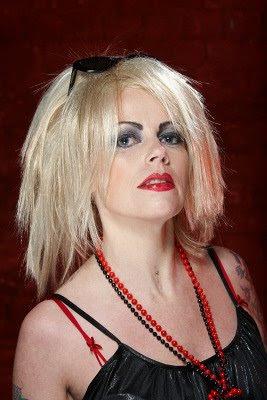Pantone Huey Pro

Most of the stuff I talk about on this blog tends to be very much based around the point of capture. Lighting and cameras are a huge part of what I do - I'm very much a believer in getting things right before clicking the shutter button, rather than spending hours fixing hundreds of images in post processing. However, like all photographers, post processing is equally a very time consuming part of the deal.
For a long time I worked happily with monitors I'd calibrated by eye so that they showed something roughly approximating what they should, but I started to work more critically on certain jobs and that was a turning point for me. I needed to know that what I was seeing on my monitor was accurate. Some of the calibration tools out there are unbelievably expensive, so they were ruled out quickly for me. At the other end was the relatively cheap Pantone Huey. Having had a chat with my local camera store, I quickly ruled it out because it only supported a single monitor. No use for calibrating my dual monitor setup.
The next model up was the Pantone Huey Pro, which did offer multiple monitor support, which was the major selling point for myself. In addition, like the Huey, it offers ambient compensation where it controls the screen brightness based on your surroundings. Useful if you have a window nearby which makes the room brighter or darker depending on the time of day.
So, having purchased the Huey Pro, plugged it in and installed the software from the supplied CD, the installed application came up and gave clear instructions throughout. There is one word of warning though: During your first calibration, the software checks to see you can see certain graduations of tone, in order to check that your brightness and contrast are fine. I personally opted to say I couldn't see them properly (even though I could), so that I was given further options to fine tune my brightness and contrast. This gave a much more critical black/white point accuracy.
Other than that, everything is totally self explanatory. When asked you stick the Huey Pro to the monitor with its small suction cups, and the monitor then displays test colours for the Huey Pro to check. My only slight problem is that the first time I hadn't stuck it well enough and it fell off, even though I'd done as suggested and cleaned the screen first. Just to be safe, I then just gently held it against the screen, being careful not to press too hard or the LCD screen can show discolouration. Holding it up against the monitor for the <2 mins the calibration takes really isn't a big hassle.
Having calibrated the screen, you'll likely feel it looks very warm compared to a manually calibrated screen. This is fine, and you get used to it very quickly as your eyes adjust. Try it for a day, and then switch back to the uncorrected colours, and it'll look very blue! It's just a matter of changing what you're used to.
Having done this, you should start to see things very much more clearly. No missing badly cloned areas in the black or white areas, and you have a greater confidence that what you're seeing is right.
Another thing I love about the Huey Pro is the simplicity with which it makes multi-monitor calibration straight forward. Many products would make you pick the monitor in a screen which lists them, but the Huey Pro does the obvious thing - you drag the software to the screen you want to calibrate, and then press the button to start the process. Brilliantly simple!
Since I bought this product, I've noticed a couple of things. The main one is that when you set the screen to update based on ambient light (you can set from 10 secs upwards - I opted for every minute), you'll see the Huey Pro flash its red LEDs and then if the ambient light has changed significantly, you'll see the screen brightness change. On occasion though, the ambient hasn't changed, but you get a small flicker for a fraction of a second where the Huey Pro software seems to remove its colour correction then reapply it very quickly. This may annoy some people, but it's not something that happens all that regularly, and I can't say it worries me much.
It's a well designed product, and unlike many products nowadays, has matching well designed software. I've often said that the best products are ones you use every day, and hardly even think about the fact they exist. The Pantone Huey Pro is a prime example of such a product, and at a very competitive price as well.























































